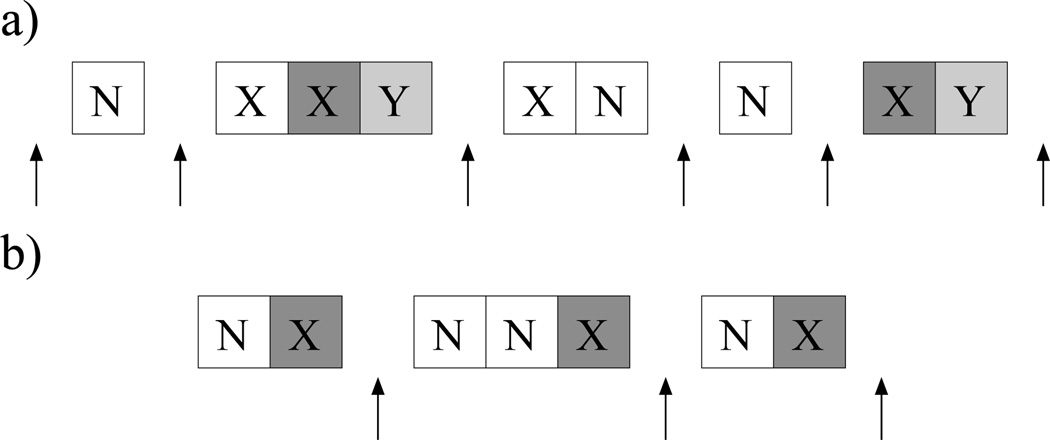Fig. 3.
Examples of the internally random model for sequence motifs when k = 1 a) Example when X ≠ Y and k = 1. After placing l − y non-Y residues and i Y residues that form the desired number i of XY1 patterns, there are l − x − y + i + 1 “slots” in which to place the remaining Y residues so that no additional XY1 patterns are formed. b) Example when X = Y and k = 1. After placing l − x non-X residues and x − i X residues without forming an XX1 pattern, there are x − i “slots” in which to place the remaining i X residues so that each one forms a new XX1 pattern.

